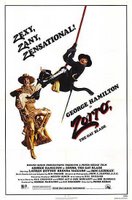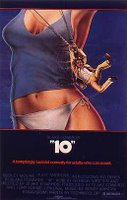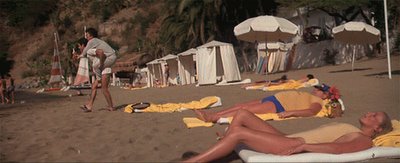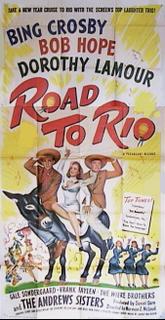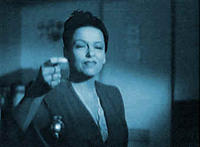Zorro's Black Whip
Directed by Spencer Gordon Bennet and Wallace Grissell, Zorro's Black Whip (1944) recounts the adventures of a hero similar to the original McCulley's Zorro. As many of the Republic Pictures's Zorro films, this is a twelve short episode serial, but this time a new version of our Californian hero rides his horse in the 1889 pre-statehood Idaho, in the United States. Bennet and Grissell move us from the original colonial land of Caballeros to a post-colonial land of Westerns cowboys.
Though the name of the serial is Zorro's Black Whip, the word Zorro (and the character as we know it from previous films that incarnate it) is not mentioned even once throughout any of the twelve episodes. On the contrary, the Black Whip seems to be a totally different hero, fighting in the pursuit of goals that fit new scenarios and circumstances, without church or Indians to defend like in other Zorro movies. The changes introduced to this film, even though it acknowledges being inspired by McCulley's story, they break in many aspects the tradition of El Zorro, from gender to the geographical areas where the story unfolds, while keeping other elements present like the dual-personality dichotomy or the whip and horse complementing Zorro's and Back Whip's outfit.
Undoubtedly, what stands out in this release is what has changed. Unlike the old Zorro, Black Whip is apparently in a more advanced and homogenous society (by 1889 the post-colonial Mexico had already lost California, and territories that were once part of Spanish America went through a period of Americanization allowing settlements of Northen migrants that modified their demography and state affiliation). In pre-statehood Idaho, neither Indians nor priests are part of the plot. Everyone looks American with no Hispanic names, words, or accent. The characteristic romance and grace of the "Latino" Zorro are replaced by pure action and risky adventure. There are guns instead of swords, citizens committee instead of imperial control, and a woman behind the male Black Whip's mask.
The dual-identity character remains as part of the plot, however, making one of the identities a woman is an interesting variation that is simultaneously affecting the second personification as the Black Whip. Linda Stirling acts as both Barbara Meredith and the Black Whip. After the previous Black Whip dies (her brother Randolf that is only seen in the first chapter), she decides to continue with legend her brother had created. The identity of the Black Whip is gendered, it is a male. But Barbara does not use the second identity to reflect something hidden from her own. As Barbara, she is equally good at riding horses and using guns as the Black Whip is, but despite the fact that she freely shows her abilities (not like Zorro that pretends to be slow or not interested in fights), Barbara is not a suspect because she is a she. In the ninth chapter of this serial, Barbara is about to be discovered, but her gender does not fit in the description. "She couldn't be! The Black Whip's got to be a man. He's outshot us, outrode us, and outfought us. Stopped us at every turn!".
Additionally, Black Whip has a partner, Vic Gordon (George J. Lewis) different than the usual servant from the Zorro movies. This partner helps Rebecca in action, but he also helps the Black Whip when discovers the real identity behind it. Performativity, essential aspect of Zorro's duality is questioned once more. Don Diego is Zorro, and apparently, Zorro is the real Don Diego, but the Black Whip is not the real Barbara. Black Whip is not a character by itself, but it carries an identity by itself. Vic Gordon wears Black Whip's clothes and immediately becomes the Black Whip, no matter who is behind, man or woman, a son or a sister. Pretending to be some else can help a person to show its nerve like a hero, but also can protect a villain's identity as it works for Dan Hammond (Francis McDonald) who pretends to be a supporter of statehood while sabotaging it.
What is left of Zorro, other than the name in the title, is a visual template to fill in with new stories, places, and times, and implicit narratives of justice, power, heroism, politics. The word Zorro in the title is not another thing than an inconclusive acknowledgement of a character which extreme flexibility and many sons have created heroes. Zorro's horse, whip, sword, and mask are detached from their historical and geographical context. Those elements as well, together or separate are as flexible and important for a new plot as the character to whom they were once attached.
Labels: difference, gender, zorro













